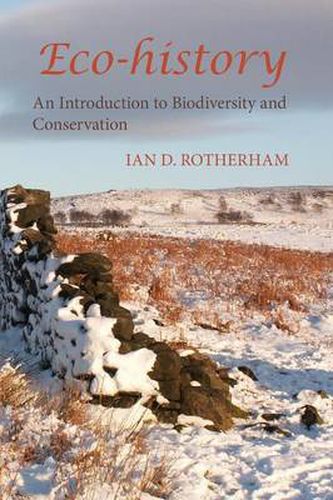Readings Newsletter
Become a Readings Member to make your shopping experience even easier.
Sign in or sign up for free!
You’re not far away from qualifying for FREE standard shipping within Australia
You’ve qualified for FREE standard shipping within Australia
The cart is loading…






This title is printed to order. This book may have been self-published. If so, we cannot guarantee the quality of the content. In the main most books will have gone through the editing process however some may not. We therefore suggest that you be aware of this before ordering this book. If in doubt check either the author or publisher’s details as we are unable to accept any returns unless they are faulty. Please contact us if you have any questions.
AN ACCESSIBLE INTRODUCTION TO BIODIVERSITY, CONSERVATION AND THE ECO-CULTURAL NATURE OF LANDSCAPES Key issues are addressed in short, focused chapters, supported by a detailed thousand-year timeline based on the British Isles. Rotherham is convinced that to conserve wildlife or ecology, and to heal the wounds of human impacts, we must understand our own history and how, over countless centuries, we have forged today’s ecologies from our impacts on, and utilisation of, nature. He argues that the interlinked concepts of biodiversity, nature conservation and of sustainability are too often mixed with notions of ‘wilderness’ and ‘nature’ and ‘naturalness’. Much of the biodiversity that we hope to conserve is the result of long-term interactions between people and nature. It is a ‘cultural ecology’, the product of the environment, history and tradition. Recognising that the landscapes around us are ‘eco-cultural’ not ‘natural’ is, Rotherham suggests, the key to understanding contemporary biodiversity and major challenges for ideas of future conservation and sustainability. The book introduces the background to humanity’s interactions with Nature and the forces at work in shaping today’s world. It is essential reading for anyone wishing to understand the nature of the global environmental crisis and how we got here. In particular, it will be a stimulating guide to students and teachers or lecturers from sixth form and college to university. It will also appeal to the ordinary wildlife enthusiast wishing understand the past, and to gain insight into what might be in store for the future.
$9.00 standard shipping within Australia
FREE standard shipping within Australia for orders over $100.00
Express & International shipping calculated at checkout
This title is printed to order. This book may have been self-published. If so, we cannot guarantee the quality of the content. In the main most books will have gone through the editing process however some may not. We therefore suggest that you be aware of this before ordering this book. If in doubt check either the author or publisher’s details as we are unable to accept any returns unless they are faulty. Please contact us if you have any questions.
AN ACCESSIBLE INTRODUCTION TO BIODIVERSITY, CONSERVATION AND THE ECO-CULTURAL NATURE OF LANDSCAPES Key issues are addressed in short, focused chapters, supported by a detailed thousand-year timeline based on the British Isles. Rotherham is convinced that to conserve wildlife or ecology, and to heal the wounds of human impacts, we must understand our own history and how, over countless centuries, we have forged today’s ecologies from our impacts on, and utilisation of, nature. He argues that the interlinked concepts of biodiversity, nature conservation and of sustainability are too often mixed with notions of ‘wilderness’ and ‘nature’ and ‘naturalness’. Much of the biodiversity that we hope to conserve is the result of long-term interactions between people and nature. It is a ‘cultural ecology’, the product of the environment, history and tradition. Recognising that the landscapes around us are ‘eco-cultural’ not ‘natural’ is, Rotherham suggests, the key to understanding contemporary biodiversity and major challenges for ideas of future conservation and sustainability. The book introduces the background to humanity’s interactions with Nature and the forces at work in shaping today’s world. It is essential reading for anyone wishing to understand the nature of the global environmental crisis and how we got here. In particular, it will be a stimulating guide to students and teachers or lecturers from sixth form and college to university. It will also appeal to the ordinary wildlife enthusiast wishing understand the past, and to gain insight into what might be in store for the future.